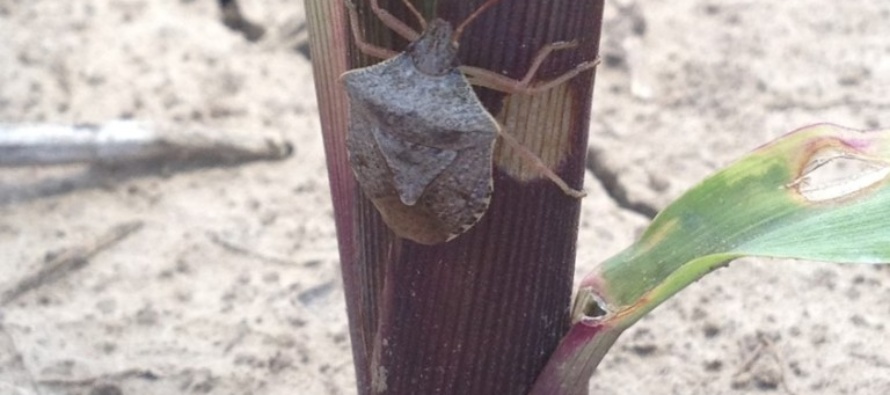Bifenthrin Alternatives for Brown Stink Bugs in Corn?

Related Articles
- 2010 Soybean And Corn Variety Trial Data 3
- Mississippi Cotton Insect Situation of 2010: A Look Back 3
- Rice Insecticidal Seed Treatment Recommendations for Mississippi in 2011 0
Latest Tweets
Brown stink bugs have been treated on a fair number of acres of corn in the Delta this year. With the loss of Methyl, there are not a lot of good choices to control this pest in corn. We are essentially left with only the pyrethroid class of chemistry. As pyrethroids go, they are not all created the same. Bifenthrin has long been proven to provide superior control of brown stink bug compared to other pyrethroids, however, even bifenthrin would be inferior to other products, such as acephate in soybean or Bidrin in cotton, if these could be used in corn. Bifenthrin appears to work better on brown stink bug in corn than it does in cotton or soybean. We believe this is because we get superior coverage in seedling corn. Currently there is a lot of discussion going on about very real shortages of bifenthrin this year. Many are very concerned about meeting the needs for increased cotton acres, not to mention redbanded stink bugs we will likely face on some acres in soybean this year. This, and the fear of mixing EC formulations of insecticide with some of the more popular corn herbicides (injury concern) has led to many questions lately about the use of other pyrethroids in corn to control brown stink bugs to preserve some of the bifenthrin supplies.
Considerations:
- Do not make automatic applications. They hardly every work for stink bugs in corn. Pyrethroids have short residuals and they are generally wasted applications. We have tried these in research plots based on growth stages and have had zero success in eliminating damage.
- If possible, you can make border applications next to ryegrass or other sources of entry into a field
- Can I use other pyrethroids such as Warrior (Karate) or Mustang Max, etc..? Yes, you can. Will it be as good as bifenthrin, NO. However, it will very likely get you by. We are now in hot weather and the corn is jumping. We will move through this stage rapidly now.
- Keep in mind: A lot of the stink bug damaged plants have cosmetic injury only. Many do not have the growing point affected and produce normal yield. Stink bug damage in corn is generally not as bad it looks. However, we fully acknowledge there are some tough spots out there this year.
How Random Stand Loss Affects Corn Yield at V5 Growth Stage
How much do brown stink bugs affect yield in field corn? The test below is an absolute worse case scenario that would never happen in a real world situation, but it makes a point. The graph below represents three tests conducted over the last couple of years by PhD student Tyler Towles. We mixed non-Roundup corn with Roundup Ready corn at 10, 20, 30, 40, and 50% levels and sprayed Roundup at the V5 growth stage. The non-Roundup Ready plants were distributed randomly throughout all the plots. Then yield was recorded. Basically what the data show is that we lose 0.77 bushels per acre for every percent of stand loss at the V5 growth stage. This means if we had 10% stand loss we we lose 7.7 bushels of yield. Now keep this in mind….. This would be for a field that had 10% stand loss across the entire field. This would almost never be the case with stink bugs. Also, as mentioned earlier, many of the damaged plants, without growing point injury, would recover with no yield loss. So practically speaking the realistic loss in bushels per acre from stink bugs, considering what we know about their distribution across whole fields, edge effects, and ability of corn plants to recover, would indicate that some yield loss would occur. However, yield loss would be very minimal and would likely not contribute much to total field averages. This does not diminish the fact that there are quite a few fields that absolutely needed treatment over the last couple weeks.





Let me tell You a sad story ! There are no comments yet, but You can be first one to comment this article.
Write a comment